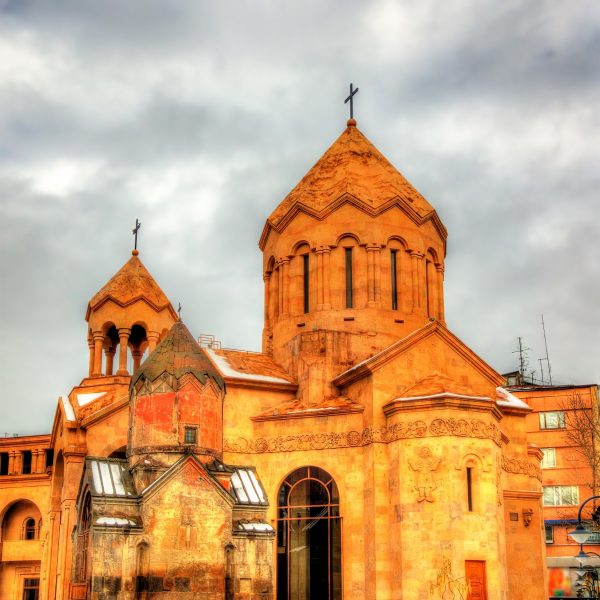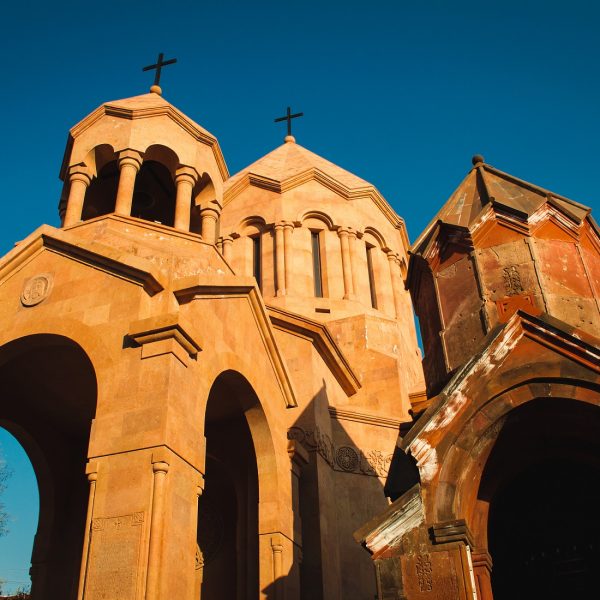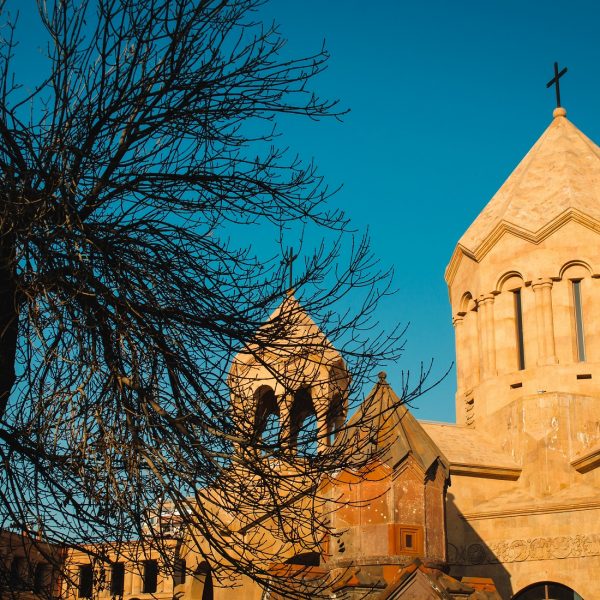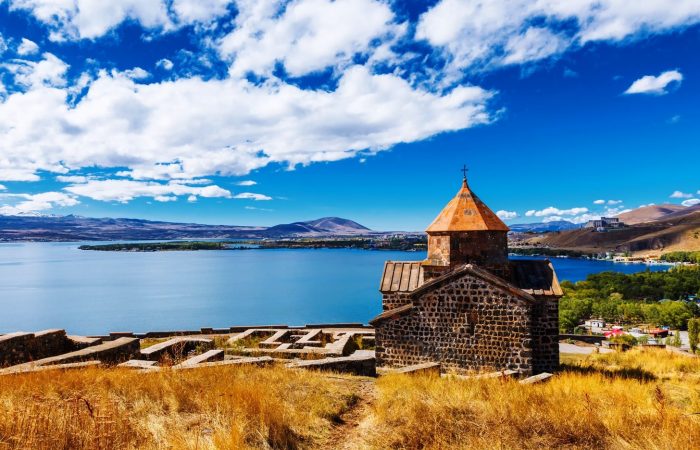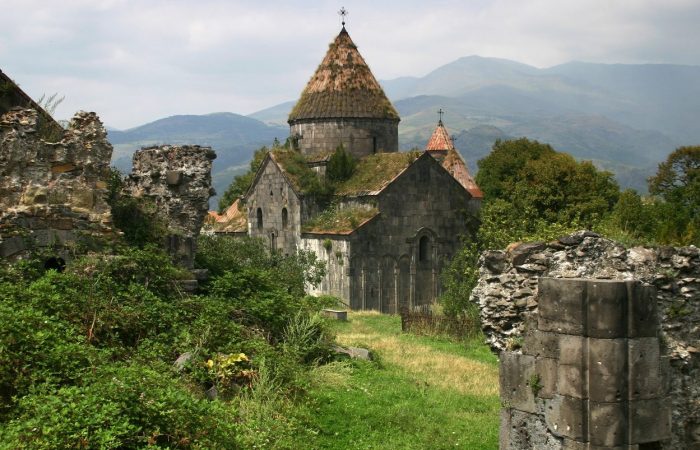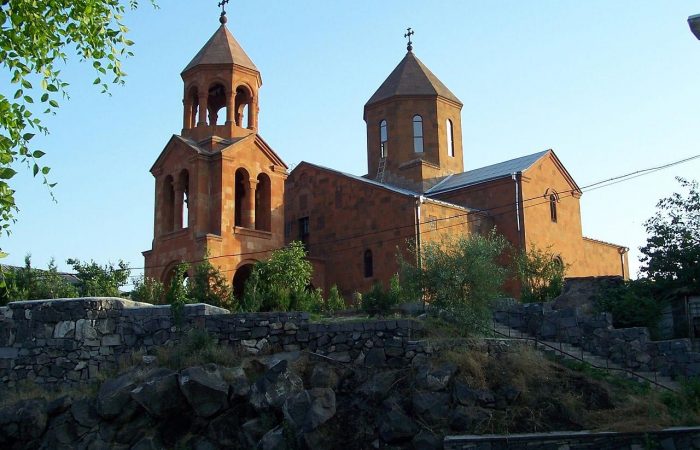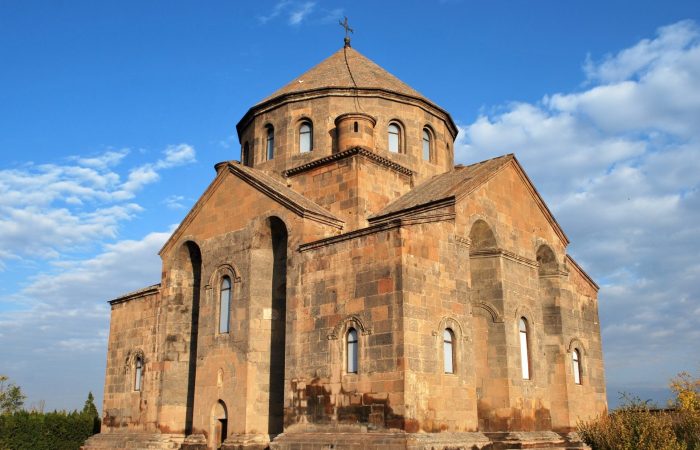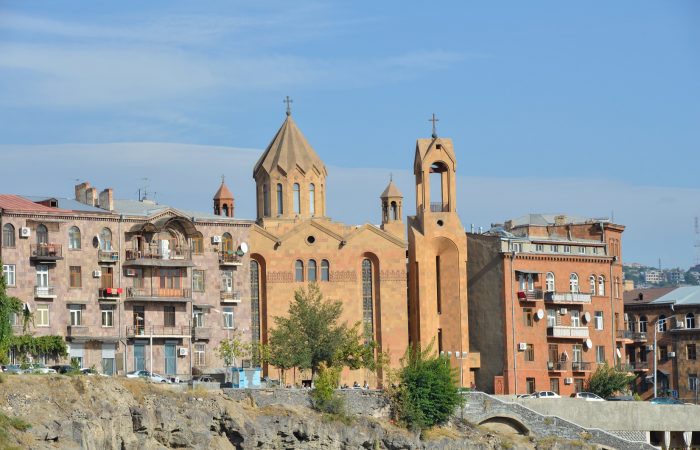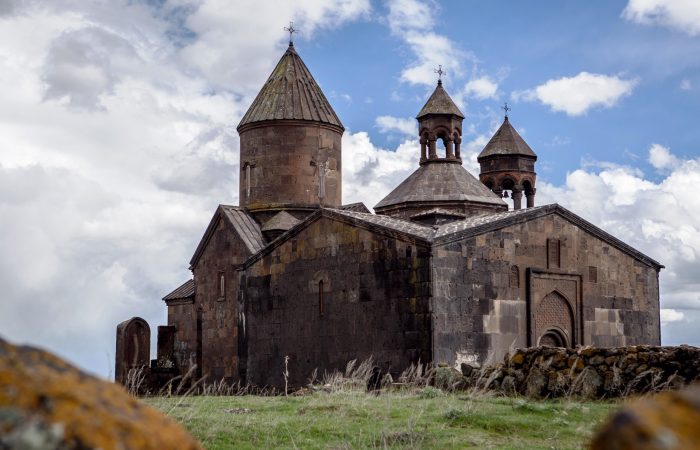Katoghike Church Early History
Katoghike is a medieval 13th century church. During the 17th century, particularly in 1679 an earthquake occurred (back then Armenia was part of the Persian Empire). With the magnitude of 7.0 the earthquake destroyed and ruined a number of important buildings in Yerevan. Among those buildings were Yerevan Fortress, which was completely destroyed, Surb Zoravor Church of Yerevan, Saint Poghos Church, Saint Sarkis Church and Saint Katoghike Church.
In 1693-1695 the construction of a large basilica church was completed. Made of tufa-stone and cement it was basically built on the western side of the church. It came without a dome and belonged to the three-nave basilica type. The church’s prayer hall measured 14.0 x 19.3 m and the outside perimeter – 16.4 x 28.4 m. As you looked at the walls of the church, you’d hardly find the usual means of architectural expression. The walls featured khachkars (cross-stones), belonging to the years 1679, 1693, 1694 and 1695. The church had two entrances; it could be accessed from southern and western sides.
During the Soviet Union period a decision was made to build apartment blocks in that area. The decision supposed the demolition of the church. It was at that time that the intact 13th century church was discovered within the larger church. Protests started. Both the population and archaeologists wanted to preserve that small church and they did it. The church was preserved.
As the basilica was being demolished khachkars dating back to 1472, 1641 and 1642 were found. Historical studies claim there used to be a church called “St. Astvatsatsin Church.” This hypothesis was confirmed. The two vestries of the southern and Western churches were annexed and after they were opened oldest inscriptions were found on the walls, which dated back to 1264. On the whole, the inscriptions found on the western walls dated back to 1284 and the 16th century, while the northern facade included inscriptions dating back to 1609. In this regard, the chapel was, in all likelihood, built in the 17th century to the west of the Saint Astvatsatsin Church where the building of the Katoghike Church rose at the end of the same century. The essence of this finding is explained by the simple fact that it’s the only proof showing that the Saint Astvatsatsin church was the only Yerevan church to survive the earthquake.
The present day St. Astvatsatsin church continues to bear the name “Katoghike.” It is relatively small – 5.4 x 7.5 m. Because of its small size and limited space it serves as a prayer house and a chapel.
Construction of a New Complex
Presently a new religious complex is being constructed. The construction is particularly concentrated on the north side of the Katoghike church. The construction of two buildings is underway – Saint Anna Church and a building that will serve as the Yerevan residency of Karekin II, the Catholicos of All Armenians.
On July 4, His Holiness Karekin II Supreme Patriarch and Catholicos of All Armenians conducted a ground blessing service for the construction of these two buildings. Upon the conclusion of the service, he addressed the people in attendance. He stated in part: “In a few years we will feel great joy in consecrating the Church of St. Anna, where our children will come to offer their prayers to God for the stability of our Motherland, and for the blessed and prosperous life of our nation… In erecting the Church of St. Anna, we will mend the Holy Katoghike Church, the wounds of which are wounds on the soul of our nation. We believe that curing these wounds we will make our national life vibrant, luminous and God-pleasing. We must always glorify God and offer our gratitude and blessings to our Father in Heaven, who instills love within us and grants blessings and prosperity to our nation … during the years of Soviet atheism, the Holy Kahoghike Church faced the same tragic fate of destruction like hundreds of churches in our capital city. But this one small part was spared through the Lord’s mercy, and it has served our faithful for many years. Here Christians have offered their prayers and church services have been celebrated.”
The blessing was a real ceremony. Armenian President Serge Sarkisian, President of Constitutional court Gagik Harutyunyan, Yerevan Mayor Gasik Beglaryan, Holy Etchmiadzin Brotherhood members as well as the members of the Supreme Spiritual Council were present there.
The construction of the church and the residence are financed by American Armenian Hrayr Hovnanyan and his wife Anna Hovnanyan. Saint Anna church will be named after her. Chilingaryan Design Construction won the contracting bid for the complex. According to the Director of Chilingaryan Design Construction Garik Chilingaryan, the project meets all the requirements set by the Urban Planning Department and the Cultural Preservation Committee.
There are contradicting opinions upon the construction of the complex; some are firmly against it, others are for. Nevertheless, the complex is currently being constructed. One thing that’s really important is the fact that no matter how large or small the complex is upon completion, the historical piece, which is the Saint Astvatsatsin Katoghike Church, will be preserved in all its beauty carrying the breath of the 13th century Armenian history and religious life.
Location
Holy Mother of God Katoghike Church is located at the intersection of Abovyan and Sayat-Nova Streets.

